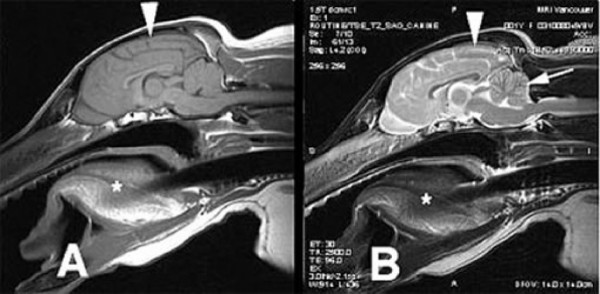Purple Day – March 26th – is a global day to help raise awareness of Epilepsy. With 65 million people worldwide suffering from Epilepsy, it’s a day for people all across the world to raise money and awareness of the disorder.
But humans aren’t the only animals to suffer, dogs and cats can too. It’s not known exactly how many dogs have the disorder, but it’s one of the most common diseases seen in Veterinary Practices.
There’s still an ongoing lack of understanding between professionals and owners communicating the issues of Epilepsy in dogs. This lack of cohesion has a knock-on effect on how clinicians diagnose and prescribe effective treatments.
International Veterinary Epilepsy Task Force
As a result, the International Veterinary Epilepsy Task Force (IVETF), a board consisting of 26 veterinary practitioners, neuropharmacologists, neurologists and neuropathologists from around the world, was set up in 2014. In their two years, they have produced several documents outlining their classifications and recommendations on every aspect of Epilepsy in dogs.
– Prof. Holger Volk, Clinical Director of the Royal Veterinary College (RVC) and Founder of IVETF says –
“Going forward, we are looking forward to continuing the journey we have started so successfully. I have no doubt that this work will have the impact we hope and will lead to better care for our patients with epilepsy.”
What is Epilepsy?
Epilepsy is a disorder where dogs suffer from uncontrollable, recurring seizures.
Causes of Dog Epilepsy
It’s believed Epilepsy can be genetic or of (as yet) unknown other causes. Experts have categorised Epilepsy from the following several different possible causes:
Surroundings
Seizures can occur if your dog’s eaten something poisonous or they’ve hit their head on something either in the home or garden.
Illnesses
Results from minor damage to the brain caused by a blow to the head or as a result of oxygen starvation to the brain during a difficult birth.
Genetics
There are several dog breeds more familial to getting Epilepsy. Dog breeds with a higher chance of suffering Primary Epilepsy include:
- German Shepherds,
- Border Collies,
- Labrador Retrievers,
- Beagles,
- Australian Shepherds,
- Collies and
- Belgian Tervurens.
Gender
According to the Australian Veterinary Association, male dogs are prone to suffer from Epilepsy.
Age
Primary Epilepsy (see Genetics, above) is most likely in young dogs up to six years old.

The German Shepherd dog is one of the breeds more susceptible to getting Epilepsy.
Epileptic Seizures
The warning signs
Some dogs realise when they’re about to have a seizure and will seek out their owner to sit by them. Over time you may start to notice a pattern or routine in your dog’s behaviour leading up to a convulsion.
When will a seizure happen?
Your dog will more than likely have a seizure when rested and relaxed. It’s uncommon (although not impossible) for a dog to have a seizure whilst exercising. Seizures often happen in the evening or at night, or during times of anxiety or stress.
What happens to my dog during a seizure?
Your dog will be unconscious, and won’t be able to hear you.
Many dogs fall on their side and will start moving their legs (as if they are running)
Some dogs will lose control of their bowels and bladder or whine and cry out.
A seizure will last on average between two to four minutes.
Time the length of your dog’s seizures. This information is useful for your Vet.
What should I do during a seizure?
- Most importantly – stay calm.
- Never put your fingers or hand in or near the mouth.
- Turn off the TV and dim the lights
- Don’t interfere or touch your dog unless they’re posing a danger to themselves.
- Move anything surrounding your dog that may be harmful to them.

A seizure will often feel longer than it actually lasts. Source
What happens to my dog after a seizure?
The majority of dogs will be dazed and confused after a convulsion. This disorientation can last anywhere between 10 minutes to 24 hours. Some dogs won’t realise what’s happened and will carry-on regardless with what they were doing before.
What should I do after my dog’s had a seizure?
If the seizure lasts less than two minutes
If the seizure lasts less than two minutes, let your pooch quietly recover to calm down. Call your Vet fifteen to twenty minutes after the seizure’s finished. If your dog’s had a seizure before then your Vet may want you to bring your dog into the surgery.
If the seizure lasts more than two minutes
Call your Vet to make sure someone qualified is available to help your dog and then make arrangements to get your dog to the surgery as soon as you can.
Diagnosing Dog Epilepsy
It’s hard to diagnose Epilepsy. Your Vet often won’t be present during our dog’s seizure, so it’s recommended you record the seizure either by note-taking or videoing to show your Vet.
Moving forward, the IVTEF aim to ensure that all professionals undertake the same treatment planning and studies to provide Vets, responsible dog breeders and owners with advice on all areas in the field of epilepsy.
– Dr. Clare Rusbridge of University of Surrey and Fitzpatrick Referrals comments –
“Magnetic Resonance Imaging (MRI) is regarded as an important diagnostic test to reach the diagnosis of idiopathic epilepsy and there is a need for a standardised veterinary epilepsy-specific MRI protocol which will facilitate more detailed examination of areas susceptible to generating and perpetuating seizures…”
In addition to MRI scans, your Vet will also take blood and urine tests, X-rays and a Cerebrospinal Fluid Analysis to rule out any other possible disorders.
When diagnosing Epilepsy, it’s recommended by the IVTEF that your Vet consider:
- the best time to start treatment,
- what the best drugs are, and
- when to change treatments for effective results.
What’s it like living with an Epileptic dog?
Although Epilepsy doesn’t have a cure yet, but we can use medication to control seizures.
It’s essential you’re patient whilst your Vet finds the right mix of medications and drug levels to help control your dog’s seizures. This can often take months of blood testing to make sure drug levels are at their peak levels.
In the early stages of diagnosis you’ll visit your Vet frequently and will have to give your dog medication daily. Your dog will more than likely have to take daily medication for the rest of his life.
After a few months, and once your Vet’s satisfied, then you may only need to visit twice yearly for checkups.
It’s important you keep your seizure diary (whether it be video or written) to show your Vet when you visit.

MRI scans from a dog with Epilepsy. The tongue (*) can be seen clearly in the dog’s mouth and its brain (arrowheads) is shown in detail. A: This image shows the spinal fluid that surrounds and circulates through the brain as dark in colour. B: This image shows the spinal fluid as white and it also displays the different types of brain tissue more clearly. This difference is seen most clearly in the cerebellum, shown by the arrow. Source
Medications
There are three main drugs used in the treatment of Epilepsy. Fitzpatrick Referrals estimate that 25-33% of dogs with Epilepsy will need more than one medication to control their seizures.
1. Bromide
Usually given in liquid form with food (it causes nausea when given on an empty stomach), Bromide stays in the body for a long time. It is therefore given once a day. If your dog suffers from cluster seizures (groups of seizures one after another) then Bromide is given with Phenobarbital.
2. Phenobarbital
The most commonly used drug in the treatment of Epilepsy, Phenobarbital is also known as Phenobarbitone, and is sold as Epiphen. It’s available in both tablet and liquid forms and may be given twice daily. Side effects including increased thirst, appetite and drowsiness are common in many dogs.
3. Diazepam
Diazepam (or Valium) is used to stop a seizure while it’s happening. Usually strictly for prolonged seizures, Diazepam comes in either suppository or injection forms. This must be used sparingly as your dog can become tolerant to it very quickly.
What can I do to make the treatment successful?
In order to help your dog, you must adhere to the following:
- Stick to a routine
Give medication at the same time everyday. Your dog will soon become dependant on the amount of drugs in the blood. Missing a dosage will cause your dog’s levels to decrease, resulting in a seizure.
- Keep notes
As mentioned earlier in this post, it’s vital you keep detailed records of your dog’s seizures. This will help your Vet gain an understanding of your dog. Epilepsy is on an individual case-by-case basis, so if you’re dog’s having more frequent seizures your Vet will need to know this. They’ll then look at possibly changing medication to something more effective.
- Don’t modify anything
Never change anything without consulting your Vet first. This includes dietary alterations, introducing additional medications and (especially) changing the medication dosage.
Remember – you are not the expert. They are.
Resources and help
Websites
You are not alone. Here’s some super-useful websites to help you if you’re distressed or confused about dog Epilepsy.
Downloadable help
Check out these downloads for everything including a seizure diary template, drug treatment factsheets and more.
Tell us your story
Do you have a dog suffering with Epilepsy? Share your experiences with our community by commenting below.